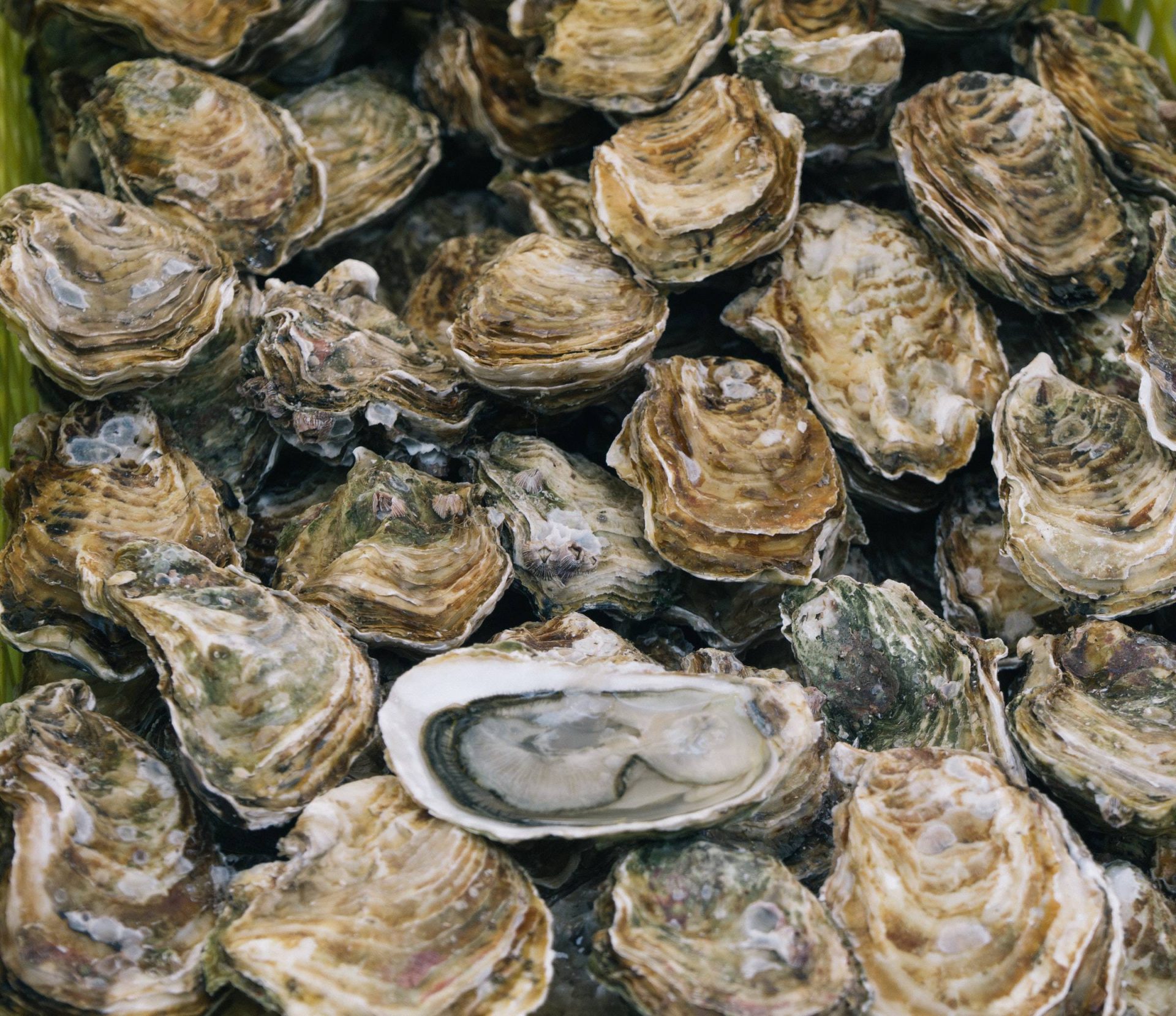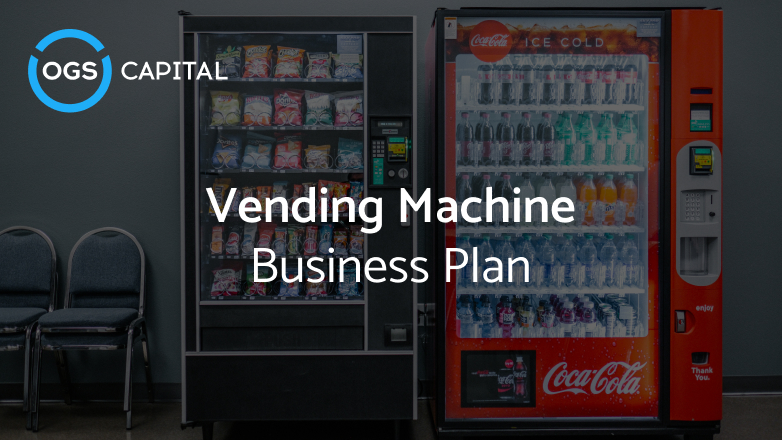Table of Content
Oyster Farm business plan for starting your own business
If there is a business that can never go out of business, it is that of food. That’s why we have brought this oyster farming business plan for you. If you want to know how to start oyster farming, this business plan details all aspects of that. This business is a lucrative due to the relatively less investment needed and the high profit margin.
If you want to start your own oyster farm, you need to start by writing a strategic business plan for the business and only then can it be a successful one. The basics of this business plan will be same as those of a fish farming business plan as both of the businesses are more or less the same.
Oyster Farm Business Plan Summary
2.1 The Business
Jennifer’s Oysters will be a registered, licensed oyster farm located in Detroit, Michigan. The farm will provide all species of oyster and some of the sea fish that can be farmed with oyster. All the products will be supplied all over the state. As there was no oyster farm business for sale in the area, a farm will be started from scratch.
2.2 Management of Oyster Farm
Jennifer Freeman will be the owner of the oyster farm. She will hire 3 managers to run the farm. The managers will be responsible for operations, sourcing, and sales. All matters of the farm will be decided by the managers and the important financial matters will be brough under the notice of Jennifer.
Note
To start an oyster farm that can be profitable, it is important to have the people that can run it efficiently, and Jennifer will not spare any expense to make her oyster aquaculture business plan successful.
2.3 Customers of Oyster Farm
If you want to know how to write a business plan for bank loan for starting an oyster farm, you need to have a clear picture of the customers you will be serving. This aspect of this business plan will be the same as that for an agriculture fruit farm business plan.
The customers of Jennifer’s Oysters will be:
- Individual/Domestic Customers
People looking to buy fresh oysters for personal/domestic use will fall into this category. These customers will be large in number but will buy small amounts.
- Restaurants
These will be the repeat and regular customers of the business and will bring most of the sales.
- Retailers
Retail stores in the area will also be among the list of customers of the oyster farm.
- Frozen Food Providers
Processed frozen food providers in the area will also be among the leading customers of the business.
2.4 Business Target
The targets of Jennifer’s Oysters will be:
- To become number 1 suppliers of oysters in the area.
- To start making $23.7k per month in profits by the end of year 2.
- To expand to at least three cities
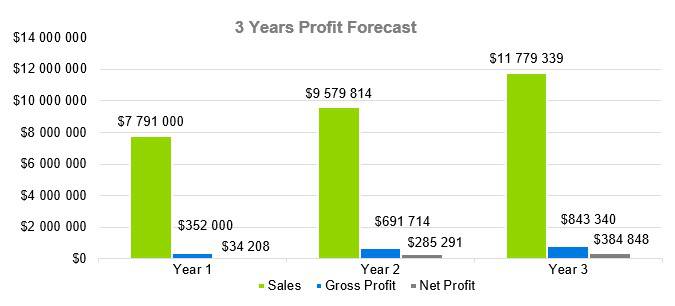
Company Summary
3.1 Company Owner
The owner of the oyster farm will be Jennifer Freeman. She has a 10-year experience of marine farming and knows how to oyster farm more than anyone else. She is thinking of shifting to her own business from the job and knows quite well how do oyster farms work making her the perfect owner of the business.
3.2 Why the Oyster Farm is being started?
The next important thing in this oyster farm business plan is discussing why this business is being started. The reason behind this has two parts. For one, Jennifer has incredible experience in this field and has recently got her inheritance, meaning she has the money and the experience to start this business.
Secondly, there is no oyster farm in the vicinity and the oyster farm profit will be pretty high if the business is done right.
3.3 How the Oyster Farm will be started?
Step1: Planning
The first thing to do, for starting an oyster farm is planning. In this step, everything from the location of the farm to the customers and services will be finalized. It is this step where all the expenses and other aspects will be determined and a strong strategy for opening and running the farm will be made.
Step2: Making a Brand
The next thing to do, after the plan is finalized and before the farm is made, is to establish a brand for our business. This is one of the most important steps. Having an established, reputable brand that people trust is cardinally important in making any business successful.
Step3: Establish Physical & Web Store
We need to sell the product and in order to get to the most customers, it is important to have a physical outlet as well as an online store for the customers to buy the product from us.
Step4: Promotion and Marketing
Last, but not the least, promoting and marketing the farm is one of the most important things to make the business successful.
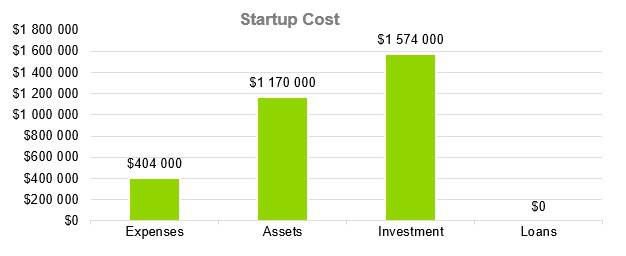
| Start-up Expenses | |
| Legal | $244,000 |
| Consultants | $0 |
| Insurance | $32,000 |
| Rent | $40,000 |
| Research and Development | $29,000 |
| Expensed Equipment | $55,000 |
| Signs | $4,000 |
| TOTAL START-UP EXPENSES | $404,000 |
| Start-up Assets | $322,000 |
| Cash Required | $360,000 |
| Start-up Inventory | $50,000 |
| Other Current Assets | $207,000 |
| Long-term Assets | $231,000 |
| TOTAL ASSETS | $1,170,000 |
| Total Requirements | $1,574,000 |
| START-UP FUNDING | |
| Start-up Expenses to Fund | $404,000 |
| Start-up Assets to Fund | $1,170,000 |
| TOTAL FUNDING REQUIRED | $1,574,000 |
| Assets | |
| Non-cash Assets from Start-up | $1,542,000 |
| Cash Requirements from Start-up | $340,000 |
| Additional Cash Raised | $55,000 |
| Cash Balance on Starting Date | $40,000 |
| TOTAL ASSETS | $1,977,000 |
| Liabilities and Capital | |
| Liabilities | $30,000 |
| Current Borrowing | $0 |
| Long-term Liabilities | $0 |
| Accounts Payable (Outstanding Bills) | $47,000 |
| Other Current Liabilities (interest-free) | $0 |
| TOTAL LIABILITIES | $77,000 |
| Capital | |
| Planned Investment | $1,574,000 |
| Investor 1 | $0 |
| Investor 2 | $0 |
| Other | $0 |
| Additional Investment Requirement | $0 |
| TOTAL PLANNED INVESTMENT | $1,574,000 |
| Loss at Start-up (Start-up Expenses) | $326,000 |
| TOTAL CAPITAL | $1,900,000 |
| TOTAL CAPITAL AND LIABILITIES | $1,977,000 |
| Total Funding | $1,574,000 |
Services of Oyster Farm
Just like a liquor store business plan template, we need to define the services we will be providing before we can move forward with this business plan. This is not necessary in a business plan for oyster farm so we need to define the services in detail.
- Fresh Sea Food Provision
We will offer fresh sea food as one of our major services from the oyster farm.
- Fishing Pools
We will rent out the ponds in the season for people to come and fish. This will be one of the side businesses for the farm.
- Marine Life Research
We will establish a lab and offer it for use to PhD scholars to do research on the most modern equipment.
- Water Sports
In the summers, part of the farm can be offered to people as a water sports arena.
Marketing Analysis of an Oyster Far
Business plan for investors
Marketing analysis is one of the most important things to be done before starting any business and that’s why it is the most important part of this oyster farming business plan. This is the part where we analyze various aspects of the market with respect to the business in order to devise such a strategy as can make the business successful.
If we need to open an oyster business, we need to do the marketing analysis the first thing before starting an oyster farm.
Just like an organic fertilizers business plan it is cardinally important to know all the forces at play before we learn how to farm oysters at home.
5.1 Market Trends
Before you learn how to become an oyster farmer, it is important to have a look at the market trends of the industry you are about to enter. According to the latest stats, there are 2,807 oyster farms in the US which employ above 10,000 people and have a collective turnover of a whopping $1 billion.
The promising thing is that the popularity of seafood is increasing in the country and the market for oyster farms is going to get bigger with the passage of time. Now is the right time to enter this market.
5.2 Marketing Segmentation
Market trends are not the only thing to consider when starting a business. You need to know the subdivisions of the market that you are about to enter. In case of an oyster farm, the market segmentation will be the following:
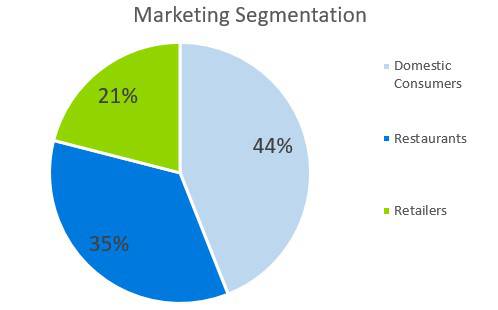
5.2.1 Domestic Consumers
People who like oyster and want to buy it for their own use will make up the set of customers with the largest number. We will offer special prices and discounts for these customers at the start.
5.2.2 Restaurants
Surveys have revealed that the local restaurants serve oysters as a premium dish and are always in the need of fresh oysters. We will make long-term agreements with these customers to supply them the product.
5.2.3 Retailers
Local retail stores and supermarkets will also be a major market segment that we will be focusing.
| Market Analysis | |||||||
| Potential Customers | Growth | Year 1 | Year 2 | Year 3 | Year 4 | Year 5 | CAGR |
| Domestic Consumers | 44% | 48,000 | 49,000 | 51,000 | 53,000 | 54,000 | 10.00% |
| Restaurants | 35% | 37,000 | 39,000 | 40,000 | 41,000 | 42,000 | 10.00% |
| Retailers | 21% | 19,000 | 22,000 | 24,000 | 26,000 | 27,000 | 11.00% |
| Total | 100% | 104,000 | 110,000 | 115,000 | 120,000 | 123,000 | 10% |
5.3 Business Target
The targets of this oyster farming business are to:
- Eventually become the leading supplier of seafood in the area.
- Expand to other states and gradually the whole US.
- Provide grade A oysters and other seafood.
excellent work
excellent work, competent advice. Alex is very friendly, great communication. 100% I recommend CGS capital. Thank you so much for your hard work!
5.4 Product Pricing
We will keep the prices of our product at a level above the competition. This is because there is no one supplying fresh oysters in the area and the demand is high. This will earn us good customers even if we have a price higher than the existing market.
Marketing Strategy of Oyster Farm
Marketing strategy is also one of the most important parts of any oyster farm business plan and needs to be taken seriously. This oyster farm business plan covers this aspect too. Just like a garden nursery business plan, we will focus on providing fresh food.
6.1 Competitive Analysis
We have conducted thorough competitive analysis and have determined that:
- No competitor in the area is offering fresh oysters in the area.
- The oyster available in the area is imported and is often out of stock.
- Oyster rates are too high for people to afford.
- People are not happy with the oyster dishes in the local restaurants due to the unavailability of fresh oyster.
6.2 Sales Strategy
Our sales strategy will be to
- Keep the prices low at the start to attract more customers.
- Ask prominent local figures and some celebrities to endorse out product.
- Offer discounts to bulk customers like restaurants and retailers to make our name known to the people of the area.
6.3 Sales Monthly
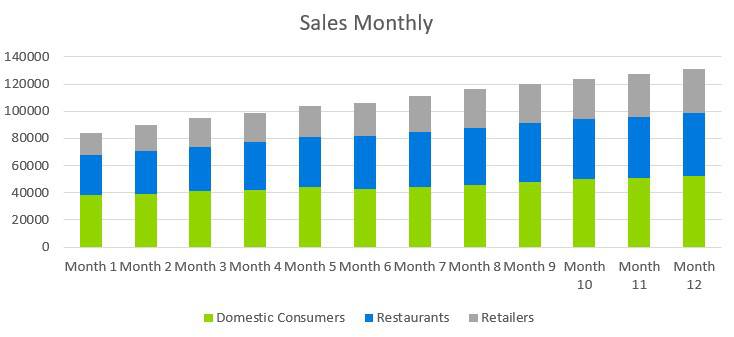
6.4 Sales Yearly
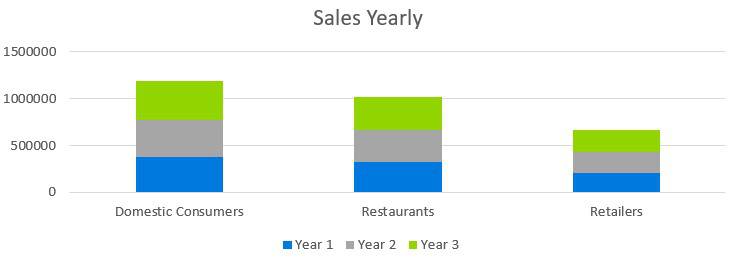
6.5 Sales Forecast
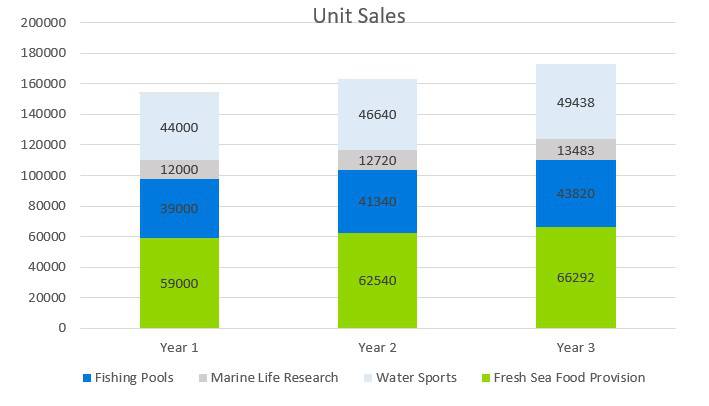
| Sales Forecast | |||
| Unit Sales | Year 1 | Year 2 | Year 3 |
| Fresh Sea Food Provision | 59,000 | 62,540 | 66,292 |
| Fishing Pools | 39,000 | 41,340 | 43,820 |
| Marine Life Research | 12,000 | 12,720 | 13,483 |
| Water Sports | 44,000 | 46,640 | 49,438 |
| TOTAL UNIT SALES | 154,000 | 163,240 | 173,034 |
| Unit Prices | Year 1 | Year 2 | Year 3 |
| Fresh Sea Food Provision | $55.00 | $63.80 | $74.01 |
| Fishing Pools | $58.00 | $67.28 | $78.04 |
| Marine Life Research | $40.00 | $46.40 | $53.82 |
| Water Sports | $41.00 | $47.56 | $55.17 |
| Sales | |||
| Fresh Sea Food Provision | $3,245,000.00 | $3,990,052.00 | $4,906,167.94 |
| Fishing Pools | $2,262,000.00 | $2,781,355.20 | $3,419,954.35 |
| Marine Life Research | $480,000.00 | $590,208.00 | $725,719.76 |
| Water Sports | $1,804,000.00 | $2,218,198.40 | $2,727,496.75 |
| TOTAL SALES | $7,791,000.00 | $9,579,813.60 | $11,779,338.80 |
| Direct Unit Costs | Year 1 | Year 2 | Year 3 |
| Fresh Sea Food Provision | $53.00 | $59.00 | $69.00 |
| Fishing Pools | $56.00 | $64.00 | $74.00 |
| Marine Life Research | $38.00 | $43.00 | $48.00 |
| Water Sports | $38.00 | $43.00 | $50.00 |
| Direct Cost of Sales | |||
| Fresh Sea Food Provision | $3,127,000.00 | $3,689,860.00 | $4,574,175.60 |
| Fishing Pools | $2,184,000.00 | $2,645,760.00 | $3,242,709.60 |
| Marine Life Research | $456,000.00 | $546,960.00 | $647,193.60 |
| Water Sports | $1,672,000.00 | $2,005,520.00 | $2,471,920.00 |
| Subtotal Direct Cost of Sales | $7,439,000.00 | $8,888,100.00 | $10,935,998.80 |
Personnel plan
The next thing this oyster farming business plan needs to talk about is the people needed to run the business. Just like a mushroom farming business plan, this is a labor-intensive business and will need a considerable workforce to run.
7.1 Company Staff
Jennifer Freeman will be the owner and CEO of the farm. She will hire the following staff:
- 3 Managers for procurement, operations, and sales.
- 1 Accountant.
- 7 Farm workers.
- 1 Security guard.
- 2 Shopkeepers.
- 1 Social media marketer.
7.2 Average Salary of Employees
| Personnel Plan | |||
| Year 1 | Year 2 | Year 3 | |
| Operations Manager | $14,000 | $15,400 | $16,940 |
| Procurement Manager | $9,000 | $9,900 | $10,890 |
| Sales Manager | $8,000 | $8,800 | $9,680 |
| Accountant | $8,000 | $8,800 | $9,680 |
| Farm Workers | $53,000 | $58,300 | $64,130 |
| Security Guard | $17,000 | $18,700 | $20,570 |
| Shopkeepers | $9,000 | $9,900 | $10,890 |
| Social Media Marketer | $17,000 | $18,700 | $20,570 |
| Total Salaries | $135,000 | $148,500 | $163,350 |
Financial Plan
We know that oyster farming profitability mainly depends on the financial plan that we make for the business. This financial plan needs to cover everything from the starting expenses of the farm to the running costs and other costs of business involved in running this business. Just like a pig farming business plan, the investment here is relatively higher than other businesses.
We need to have money for the following at the time of starting the business:
- The cost of establishing the farm.
- The cost of setting up the retails outlet.
- Marketing and promotion costs of the business.
- Salaries of the staff until the farm starts breaking even.
- Cost of the farm equipment needed to run the farm.
8.1 Important Assumptions
| General Assumptions | |||
| Year 1 | Year 2 | Year 3 | |
| Plan Month | 1 | 2 | 3 |
| Current Interest Rate | 8.07% | 8.14% | 8.21% |
| Long-term Interest Rate | 8.27% | 8.42% | 8.45% |
| Tax Rate | 23.88% | 24.60% | 25.34% |
| Other | 0 | 0 | 0 |
8.2 Break-even Analysis
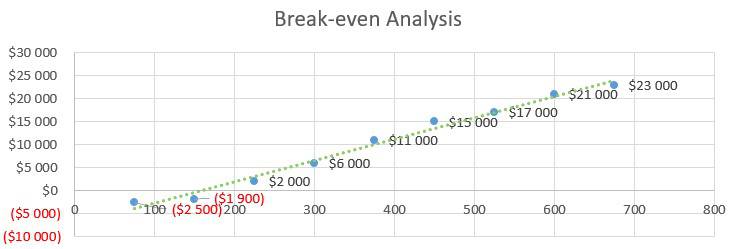
| Break-Even Analysis | |
| Monthly Units Break-even | 5345 |
| Monthly Revenue Break-even | $132,400 |
| Assumptions: | |
| Average Per-Unit Revenue | $234.00 |
| Average Per-Unit Variable Cost | $0.68 |
| Estimated Monthly Fixed Cost | $163,010 |
8.3 Projected Profit and Loss
| Pro Forma Profit And Loss | |||
| Year 1 | Year 2 | Year 3 | |
| Sales | $7,791,000 | $9,579,814 | $11,779,339 |
| Direct Cost of Sales | $7,439,000 | $8,888,100 | $10,935,999 |
| Other | $0 | $0 | $0 |
| TOTAL COST OF SALES | $7,439,000 | $8,888,100 | $10,935,999 |
| Gross Margin | $352,000 | $691,714 | $843,340 |
| Gross Margin % | 4.52% | 7.22% | 7.16% |
| Expenses | |||
| Payroll | $135,000 | $148,500 | $163,350 |
| Sales and Marketing and Other Expenses | $135,000 | $145,000 | $155,000 |
| Depreciation | $2,540 | $2,400 | $2,300 |
| Leased Equipment | $0 | $0 | $0 |
| Utilities | $3,000 | $3,100 | $3,200 |
| Insurance | $2,000 | $2,100 | $2,130 |
| Rent | $3,700 | $4,000 | $4,300 |
| Payroll Taxes | $28,000 | $30,000 | $32,000 |
| Other | $0 | $0 | $0 |
| Total Operating Expenses | $309,240 | $335,100 | $362,280 |
| Profit Before Interest and Taxes | $42,760 | $356,614 | $481,060 |
| EBITDA | $42,760 | $356,614 | $481,060 |
| Interest Expense | $0 | $0 | $0 |
| Taxes Incurred | $8,552 | $71,323 | $96,212 |
| Net Profit | $34,208 | $285,291 | $384,848 |
| Net Profit/Sales | 0.44% | 2.98% | 3.27% |
8.3.1 Profit Monthly
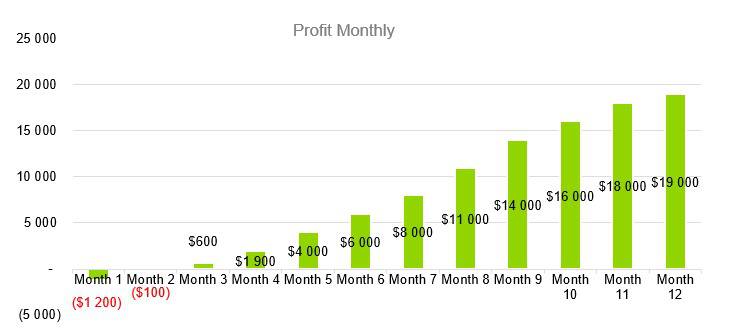
8.3.2 Profit Yearly
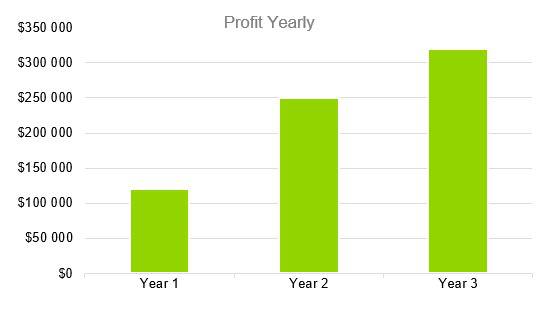
8.3.3 Gross Margin Monthly
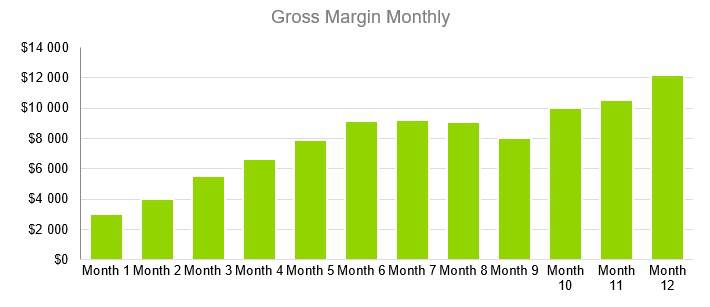
8.3.4 Gross Margin Yearly
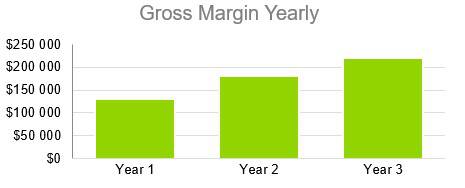
8.4 Projected Cash Flow
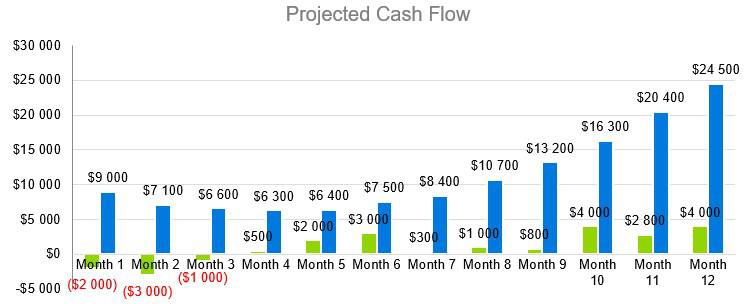
| Pro Forma Cash Flow | |||
| Cash Received | Year 1 | Year 2 | Year 3 |
| Cash from Operations | |||
| Cash Sales | $55,000 | $59,400 | $64,152 |
| Cash from Receivables | $19,000 | $20,520 | $22,162 |
| SUBTOTAL CASH FROM OPERATIONS | $74,000 | $80,660 | $87,113 |
| Additional Cash Received | |||
| Sales Tax, VAT, HST/GST Received | $0 | $0 | $0 |
| New Current Borrowing | $0 | $0 | $0 |
| New Other Liabilities (interest-free) | $0 | $0 | $0 |
| New Long-term Liabilities | $0 | $0 | $0 |
| Sales of Other Current Assets | $0 | $0 | $0 |
| Sales of Long-term Assets | $0 | $0 | $0 |
| New Investment Received | $0 | $0 | $0 |
| SUBTOTAL CASH RECEIVED | $74,000 | $81,000 | $88,000 |
| Expenditures | Year 1 | Year 2 | Year 3 |
| Expenditures from Operations | |||
| Cash Spending | $40,000 | $42,000 | $43,000 |
| Bill Payments | $23,000 | $24,000 | $26,000 |
| SUBTOTAL SPENT ON OPERATIONS | $63,000 | $66,000 | $69,000 |
| Additional Cash Spent | |||
| Sales Tax, VAT, HST/GST Paid Out | $0 | $0 | $0 |
| Principal Repayment of Current Borrowing | $0 | $0 | $0 |
| Other Liabilities Principal Repayment | $0 | $0 | $0 |
| Long-term Liabilities Principal Repayment | $0 | $0 | $0 |
| Purchase Other Current Assets | $0 | $0 | $0 |
| Purchase Long-term Assets | $0 | $0 | $0 |
| Dividends | $0 | $0 | $0 |
| SUBTOTAL CASH SPENT | $63,000 | $68,040 | $73,483 |
| Net Cash Flow | $15,400 | $17,000 | $18,000 |
| Cash Balance | $28,900 | $30,000 | $31,000 |
8.5 Projected Balance Sheet
| Pro Forma Balance Sheet | |||
| Assets | Year 1 | Year 2 | Year 3 |
| Current Assets | |||
| Cash | $288,000 | $322,560 | $354,816 |
| Accounts Receivable | $25,000 | $28,000 | $31,472 |
| Inventory | $4,000 | $4,480 | $4,900 |
| Other Current Assets | $1,000 | $1,000 | $1,000 |
| TOTAL CURRENT ASSETS | $302,000 | $338,240 | $380,182 |
| Long-term Assets | |||
| Long-term Assets | $10,000 | $10,000 | $10,000 |
| Accumulated Depreciation | $20,400 | $22,848 | $25,704 |
| TOTAL LONG-TERM ASSETS | $22,400 | $25,088 | $28,224 |
| TOTAL ASSETS | $304,000 | $340,480 | $383,040 |
| Liabilities and Capital | Year 4 | Year 5 | Year 6 |
| Current Liabilities | |||
| Accounts Payable | $22,100 | $24,752 | $27,821 |
| Current Borrowing | $0 | $0 | $0 |
| Other Current Liabilities | $0 | $0 | $0 |
| SUBTOTAL CURRENT LIABILITIES | $15,400 | $17,248 | $19,387 |
| Long-term Liabilities | $0 | $0 | $0 |
| TOTAL LIABILITIES | $15,000 | $16,800 | $18,883 |
| Paid-in Capital | $33,000 | $32,000 | $33,000 |
| Retained Earnings | $54,000 | $58,860 | $64,746 |
| Earnings | $230,000 | $250,700 | $275,770 |
| TOTAL CAPITAL | $285,000 | $310,650 | $341,715 |
| TOTAL LIABILITIES AND CAPITAL | $300,000 | $340,480 | $383,040 |
| Net Worth | $291,000 | $317,190 | $348,909 |
8.6 Business Ratios
| Ratio Analysis | ||||
| Year 1 | Year 2 | Year 3 | INDUSTRY PROFILE | |
| Sales Growth | 7.06% | 7.82% | 8.67% | 3.00% |
| Percent of Total Assets | ||||
| Accounts Receivable | 9.24% | 10.24% | 11.34% | 9.80% |
| Inventory | 5.40% | 5.98% | 6.63% | 9.90% |
| Other Current Assets | 2.10% | 2.33% | 2.58% | 2.40% |
| Total Current Assets | 148.00% | 151.00% | 152.00% | 158.00% |
| Long-term Assets | 11.45% | 11,89% | 11.93% | 12.00% |
| TOTAL ASSETS | 100.00% | 100.00% | 100.00% | 100.00% |
| Current Liabilities | 4.61% | 4.65% | 4.69% | 4.34% |
| Long-term Liabilities | 0.00% | 0.00% | 0.00% | 0.00% |
| Total Liabilities | 7.36% | 7.42% | 7.49% | 7.38% |
| NET WORTH | 100.80% | 101.61% | 102.54% | 110.00% |
| Percent of Sales | ||||
| Sales | 100.00% | 100.00% | 100.00% | 100.00% |
| Gross Margin | 94.05% | 96.59% | 99.29% | 99.00% |
| Selling, General & Administrative Expenses | 93.44% | 95.96% | 98.65% | 97.80% |
| Advertising Expenses | 1.60% | 1.64% | 1.69% | 1.40% |
| Profit Before Interest and Taxes | 40.77% | 41.87% | 43.04% | 33.90% |
| Main Ratios | ||||
| Current | 37 | 38 | 38 | 32 |
| Quick | 32 | 33 | 33.825 | 33 |
| Total Debt to Total Assets | 0.22% | 0.19% | 0.18% | 0.40% |
| Pre-tax Return on Net Worth | 75.02% | 75.64% | 76.20% | 75.00% |
| Pre-tax Return on Assets | 93.46% | 98.13% | 103.04% | 111.30% |
| Additional Ratios | Year 1 | Year 2 | Year 3 | |
| Net Profit Margin | 32.34% | 33.34% | 34.38% | N.A. |
| Return on Equity | 56.01% | 57.75% | 59.54% | N.A. |
| Activity Ratios | ||||
| Accounts Receivable Turnover | 7.7 | 7.8 | 7.9 | N.A. |
| Collection Days | 100 | 100 | 100 | N.A. |
| Inventory Turnover | 32.4 | 34.02 | 34.01 | N.A. |
| Accounts Payable Turnover | 16.22 | 16.4 | 16.54 | N.A. |
| Payment Days | 27 | 27 | 27 | N.A. |
| Total Asset Turnover | 2.4 | 2.5 | 2.6 | N.A. |
| Debt Ratios | ||||
| Debt to Net Worth | -0.03 | -0.03 | -0.04 | N.A. |
| Current Liab. to Liab. | 1 | 1 | 1 | N.A. |
| Liquidity Ratios | ||||
| Net Working Capital | $245,000 | $258,720 | $273,208 | N.A. |
| Interest Coverage | 0 | 0 | 0 | N.A. |
| Additional Ratios | ||||
| Assets to Sales | 0.81 | 0.83 | 0.87 | N.A. |
| Current Debt/Total Assets | 1% | 0% | 0% | N.A. |
| Acid Test | 27.7 | 28.12 | 29 | N.A. |
| Sales/Net Worth | 2.1 | 2.1 | 2.2 | N.A. |
| Dividend Payout | 0 | 0 | 0 | N.A. |
Download Oyster Farm Business Plan Sample in pdf
OGSCapital’s team has assisted thousands of entrepreneurs with top-rate business plan development, consultancy and analysis. They’ve helped thousands of SME owners secure more than $1.5 billion in funding, and they can do the same for you.



